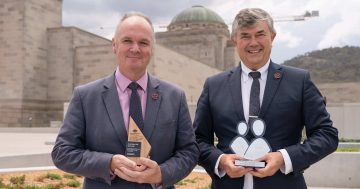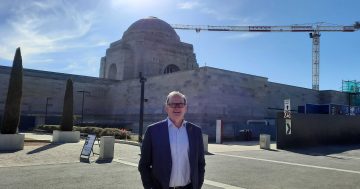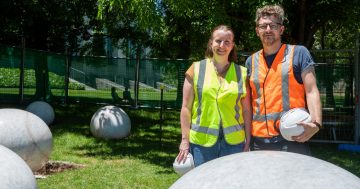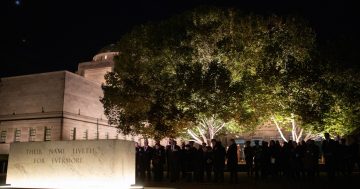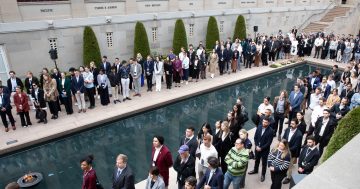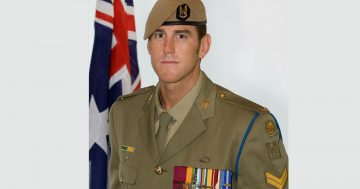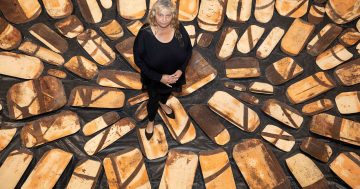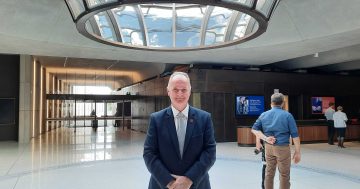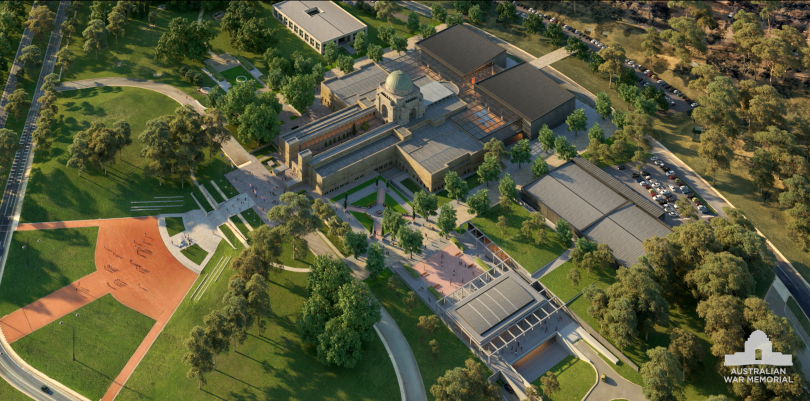
The future Australian War Memorial. Photos: AWM.
The Australian War Memorial has unveiled plans for a $498 million expansion over the next nine years that will double the size of the visitor areas of the 77-year-old institution in a significant broadening of its scope and reach.
It also announced at an event at Parliament House today that an online interactive National Register of War Memorials will record the locations and images of every publicly accessible memorial in Australia, and be the basis of a new display in the proposed expanded galleries of the Memorial.
Both the Federal Government and the Opposition embraced the plans despite disquiet in some areas about the size and scale of the commitment.
Director Brendan Nelson said the AWM needed more room to tell the stories of all Australia’s defence missions including the more contemporary operations in East Timor, Afghanistan, Iraq, and the Solomon Islands, as well as peacekeeping and humanitarian operations.
“We must tell these stories not years or decades after they have occurred, but now,” he said.
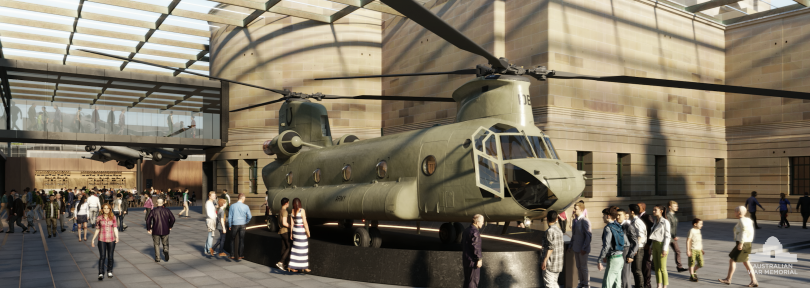
An artist’s impression of a section of the re-imagined War Memorial.
But he ruled out any exploration of Australia’s frontier conflicts between settlers and Indigenous peoples, saying that while it was a story that needed to be told, it was not possible under the AWM’s charter.
He justified the expense by saying it was essential to tell the stories of the modern campaigns and that in doing so they would provide healing to veterans and their families.
“If the War Memorial had perhaps told the story of the Vietnam War broadly and deeply earlier then maybe some of those men may not have suffered as much as they have,” he told ABC radio.
The plans outline a substantial increase to exhibition space – but the original façade will remain unchanged, with a new entryway under the existing forecourt – a complete redesign of the Memorial’s lower ground floor and a new underground exhibition hall.
A light-filled atrium adds additional extensive display spaces, as well as improved circulation and reflection areas for visitors.
Beyond the main building, a new precinct will be developed and the Bean Building on the eastern side of the precinct will be extended to integrate research collections and services, and to optimise the space in the main Memorial building for exhibitions. Poppy’s Café will remain.
Anzac Hall, built only 17 years ago, will become a new multi-level space which the AWM says will provide a seamless visitor journey through to the rest of the Memorial.
Dr Nelson said there would also be new temporary exhibition space, improved visitor orientation, wayfinding and amenities, areas for respite and reflection, new education facilities, and a theatre and functions space.
“It will include a quiet area for reflection, a space to be used by veterans’ organisations, an electronic wall displaying the myriad of community cenotaphs and memorials and another presenting defence activity today.”
Dr Nelson said servicemen and servicewomen were returning home to a country that had no idea what they had done, did not understand their service or the sacrifices they had made.
“Their story must be told to help them understand the impact service has had on them, to help them transition to life back home, and to heal,” he said.
“To make this happen, the Memorial has developed a detailed proposal to the Australian Federal Government to fund a major redevelopment of the Memorial’s galleries and precinct to create a vision that will guide us for the next 50 years.”
He said just a fraction of the collection was on display in crowded galleries but the service of 70,000 young Australians in the Middle East Area of operations of the past two decades covered only 2 per cent of available space.
The AWM plans more quiet spaces where veterans and their families can find both displays exploring the history and meaning of their service and reflection, while being able to move about the Memorial with ease.
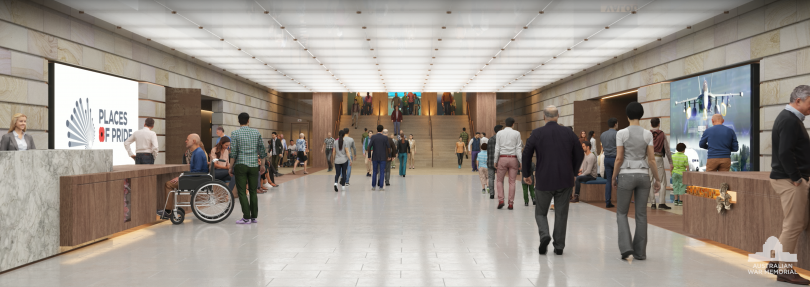
Dr Nelson said war memorials in every suburb, town, and city across Australia would be connected via the website Places of Pride, the National Register of War Memorials.
“These repositories of love, loss and ennobled memory will be proudly scrolled across a giant electronic screen. In doing so, Australians will be reminded of the integral link between the national memorial and its tentacles reaching out to every community across the nation,” he said.
“Visitors will be able to log in the name of their town, whether Devonport, Gympie, St Kilda, Parramatta or Albany and see their memorial come to life”.
Opposition spokesperson Veterans’ Affairs, Amanda Rishworth said Labor would match the Prime Minister’s funding commitment. “So that whenever the next election is and whatever happens, this work will carry on,” she said.
Senator for the ACT David Smith said the AWM held an incredibly important place in the hearts of Australians and was an important marker of the sacrifice Australia’s armed forces had made to keep the country safe.
“It is fantastic to see a bipartisan commitment to ensuring that our Australian War Memorial here in Canberra remains a modern place of reflection for the sacrifice of so many Australians,” he said.
“This redevelopment will allow for the telling of stories of current conflicts, peacekeeping and humanitarian missions that have taken place in modern times,” Senator Smith said.
“Labor welcomes and supports the redevelopment project, which will ensure the Memorial remains a solemn place of remembrance for future generations.”
In response to criticism that the money would be better spent on veterans’ needs, Prime Minister Scott Morrison said veterans should be honoured and the Government spent $11.2 billion a year to support them and their families.
Do you think the AWM should get $498 million to expand? Could the money be better spent elsewhere? Is the AWM going beyond its original intention? Or do the stories of Australia’s more recent campaigns need to be told now? Comment below.












